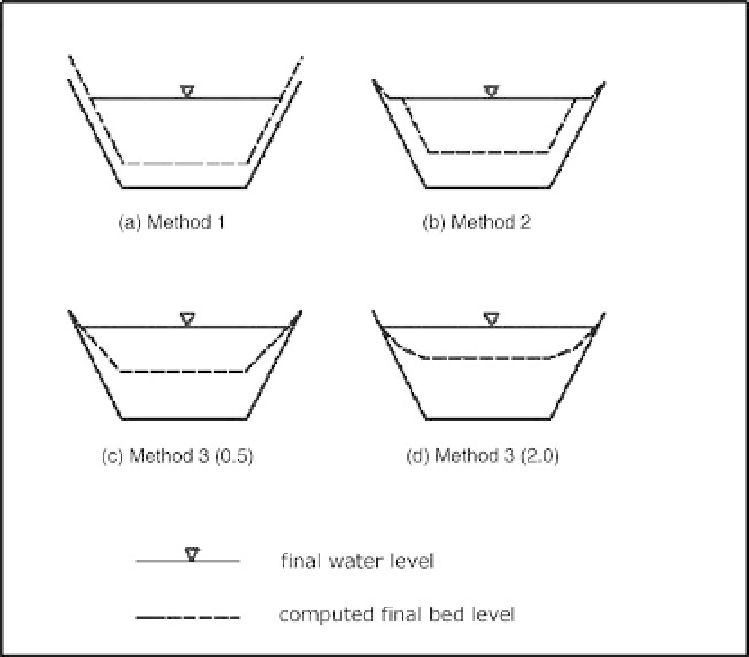Environmental Engineering Reference
In-Depth Information
Fig. 5.13
Bed Updating Options in iSIS (2001). (a) Method 1 spreads erosion or deposition evenly across the whole
cross-section. (b) Method 2 distributes erosion or deposition across only the wetted cross-section. Method 3 distributes
erosion or deposition across the cross-section according to a user-specified exponent on the local flow depth.
Examples show distribution scaled on (c) the square root of depth and (d) depth squared.
Hanson (1967), Ackers and White (1973), Ackers
and White - as updated by Ackers (1993) and, for
fine, silts Westrick and Jurashek (1985). Other
sediment transport formulae are available in
the research version of the code (iSIS 2001). The
sediment transport calculation utilizes the cross-
sectionally averaged hydraulic properties sup-
plied by the hydraulic computation. This may
cause complications where there are divided
channels or floodplain flows. Also, the flow in-
tensity specified for the threshold of sediment
motion has a significant influence on the perfor-
mance of the model.
A number of options are available in iSIS Sed-
iment to handle how erosion or deposition are
laterally distributed across cross-sections when
the bed elevation is updated (Fig. 5.13) and these
have major implications for model predictions.
Issues in 1-D Sediment Modelling
There are a number of key issues that need to be
addressed when planning any sediment investi-
gation that involves 1-D modelling. Many of
these issues are particularly important in iSIS
Sediment because it takes greater account of
fluvial processes and the characteristics of natural
sediments than many other programs.
Issues
include:
1 Selecting limits to the modelled reach - this is
necessary because it is seldom feasible or justifi-
able to model the entire fluvial system.

